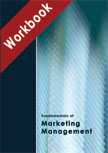BlackBerry in India: Losing its Premium Image?
|
ICMR HOME | Case Studies Collection
For delivery in electronic format: Rs. 400; For delivery through courier (within India): Rs. 400+ Shipping & Handling Charges extra » Marketing Case Studies 
Custom Search
Please note: |
|||||||
|
"BlackBerry has lost its premium image. This is a harsh reality for brands that want to go mass in India. But if numbers are a concern, it pays to lose the premium edge. If the company had stayed premium in imagery, it would have remained a niche player." -Naresh Gupta, National Planning Director, Cheil Worldwide SW Asia1 , in May, 2011.
In pursuit of this goal, the brand had lost its exclusivity, contended some marketing experts. But RIM decided to go mass in India. In 2011, BlackBerry had a range of models targeted at every possible consumer segment - senior management professionals, young executives, women, and even those who had just crossed their teens. In order to tap the potential in Tier-II and Tier-III cities in India, RIM planned to strengthen its sales and service network in these cities. Experts were skeptical about BlackBerry's decision to go mass and wondered whether this move would give the company the expected results considering the stiff competition in the market.
1] Cheil is an advertising and consultancy agency. It began in 1973 in Seoul, South Korea, with the goal of making Samsung the No. 1 electronics company in the world. 
Custom Search
|
Case Studies Links:-
Case Studies,
Short Case Studies,
Simplified Case Studies.
Other Case Studies:-
Multimedia Case Studies,
Cases in Other Languages.
Business Reports Link:-
Business Reports.
Books:-
Textbooks, Workbooks, Case Study Volumes.







